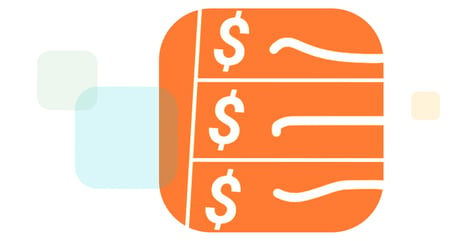Marking To Market: The PPE Struggle No One Is Talking About

Hospitals' records of their PPE supplies are only accurate if their pricing is updated.
One of Z5 Inventory's hospital partners has a warehouse where the shelves are stocked with $100 Million worth of PPE. But is it really? If the PPE were to be sold today, it might be worth less than $50 Million. That higher price is based on how much the hospitals paid for the PPE at the height of the pandemic. So how much is the stockpile of masks, gowns, and gloves really worth? (And will it be worth anything after it expires?)
Hospitals need to be taking a more proactive approach to marking their supplies to market prices.
What Is Marking To Market?
For those of us less financially minded: mark-to-market accounting is the attempt to gain an accurate valuation of assets by adjusting their recorded value to match the market. So if you bought - let's pick a random asset totally at random - N95 masks at $7 each at the height of the pandemic, now they're going for $2 each, so they probably shouldn't be logged in your system as $7 items.
As even the simplest of primers on the subject are quick to point out, marking to market can be a difficult proposition in a volatile market or time period. $2 may be the price today, but that's still significantly higher than the $0.38 that was average for N95 masks pre-pandemic.
So is $2 the "correct" price - what accountants might call the "fair value" - of the mask on your storage shelf? Probably. But is that how they're represented in your accounting and inventory tracking software? Probably not. Most healthcare facilities will be tracking the value of their supplies listed and tracked by their original purchase price.
And an inaccurate valuation of on-hand inventory can cascade into all sorts of financial and supply management inaccuracies.
How Do You Mark To Market?
In order to update the fair value of all of your on-hand inventory, you have to have an accurate view of all the inventory you have on hand. Makes sense. But, when marking to market PPE specifically, this can be a blessing and a curse.
On the one hand, counting PPE skips the daunting task of counting all on-hand inventory across the entire provider facility or system. On the other hand, PPE has traditionally been less prioritized when it comes to inventory tracking, perpetual or otherwise. Although the increased scrutiny on PPE levels from the past sixteen months has led to some improvements - like centralizing PPE supplies so that they're less scattered and hoarded across a facility - hospitals may not be equipped to gather accurate supply numbers on individual pieces on an ongoing basis.
That's especially the case because, of course, we're not just talking about face masks. Nitrile gloves, surgical gowns, eye coverings, and so on make the task more daunting than looking for the same box on all of the shelves in your surgical environments, receiving areas, storage warehouses, and elsewhere.
Those in need of help counting should consider how much easier the process would be on a modern platform with a mobile app that counters can carry with them into any supply area. It would be even better if that app could warn counters about possible mistakes and help managers track trends and make smart, proactive decisions about inventory levels. If only such a thing existed.
Oh, wait. That's what we do.
An accurate count of on-hand inventory achieved, supply chain and finance pros alike will have to adjust the pricing information attached to the quantities to current market value for all supplies. This doesn't have to be more complicated than manually changing the information - in your spreadsheets, ERPs, or other tracking software - according to the current prices you have been quoted by your suppliers.
So You Marked To Market. Now What?
Having a view of how much your supplies - specifically PPE items - are worth today is all well and good. But it's not enough.
Supply levels are still in flux as suppliers of all types are struggling to regain access to the materials they took for granted two years ago. Need for PPE supplies is still in flux as caseloads flare up and subside. A horrible upsurge in COVID-19 caseloads in Seattle will mean their N95 demand and prices will be significantly different from those in rural Kentucky.
So marking to market must be undertaken as an ongoing process. All the more reason to partner with an organization that's going to take the burden of counting off of your staff. And - even more valuable - help you find outlets for your excess.
Just because you have an accurate view of how much PPE you have and how much it's worth doesn't mean that you'll get a fair value for it when you try to sell what you don't need. Z5 Inventory can help with that by moving, selling, and donating your excess before it can expire and hits your bottom line in an even worse way.



